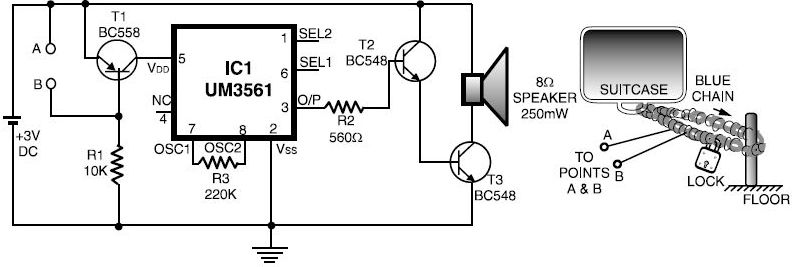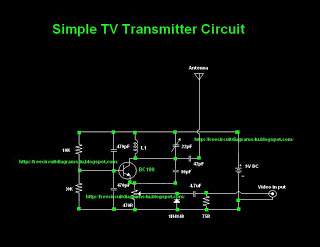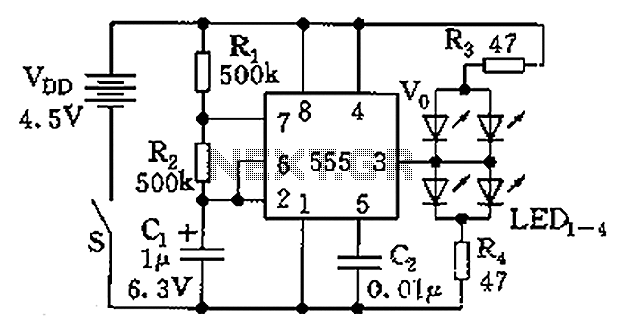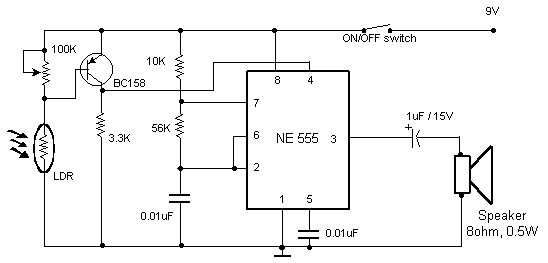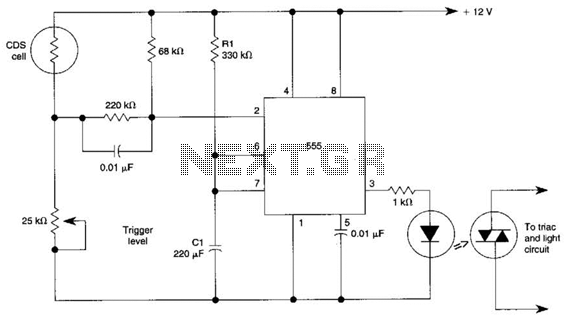
Infrared alarm barrier circuit
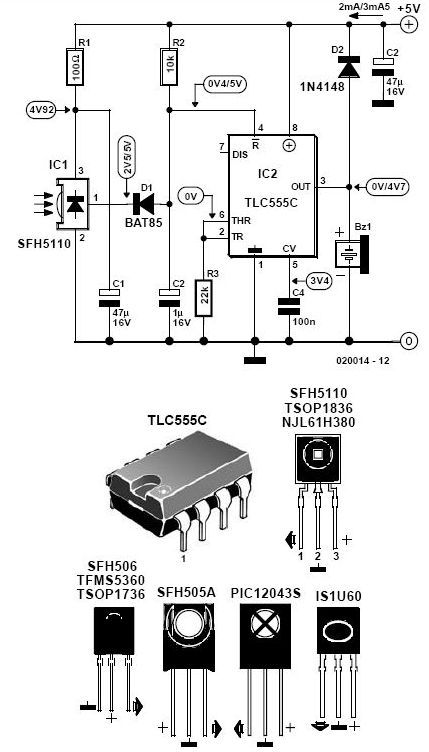
This infrared alarm barrier is designed to detect individuals passing through doorways, corridors, and small gates. The transmitter emits a beam of infrared light that remains invisible to the human eye. When a person interrupts the light beam, the buzzer connected to the output of the receiver is activated.
The infrared alarm barrier system consists of two main components: the transmitter and the receiver. The transmitter houses an infrared LED that emits modulated infrared light. This light travels in a straight line until it is obstructed by an object, such as a person walking through the designated area.
The receiver is equipped with a photodiode or phototransistor that is sensitive to the infrared light emitted by the transmitter. When the infrared beam is uninterrupted, the receiver remains inactive. However, once the beam is interrupted, the photodiode detects the absence of light and sends a signal to the buzzer circuit. This signal triggers the buzzer, providing an audible alarm to indicate that someone has crossed the threshold.
In terms of circuitry, the transmitter circuit typically includes a resistor to limit the current through the infrared LED and a modulation circuit to ensure the emitted light can be easily distinguished by the receiver. The receiver circuit may include an operational amplifier to amplify the signal from the photodiode, along with additional components such as resistors and capacitors to filter noise and stabilize the output.
This infrared alarm barrier system is suitable for various applications, including security systems, automated door controls, and pedestrian safety measures, providing a reliable and efficient method for detecting movement in designated areas.This infrared alarm barrier can be used to detect persons passing through doorways, corridors and small gates. The transmitter emits a beam of infrared light which is invisible to the human eye. The buzzer at the output of the receiver is activated when the light beam is interrupted by a person passing through it.
Infrared Light Alarm Transmitter Circuit Schematic Infrared Alarm Barrier Receiver Circuit Schematic 🔗 External reference
The infrared alarm barrier system consists of two main components: the transmitter and the receiver. The transmitter houses an infrared LED that emits modulated infrared light. This light travels in a straight line until it is obstructed by an object, such as a person walking through the designated area.
The receiver is equipped with a photodiode or phototransistor that is sensitive to the infrared light emitted by the transmitter. When the infrared beam is uninterrupted, the receiver remains inactive. However, once the beam is interrupted, the photodiode detects the absence of light and sends a signal to the buzzer circuit. This signal triggers the buzzer, providing an audible alarm to indicate that someone has crossed the threshold.
In terms of circuitry, the transmitter circuit typically includes a resistor to limit the current through the infrared LED and a modulation circuit to ensure the emitted light can be easily distinguished by the receiver. The receiver circuit may include an operational amplifier to amplify the signal from the photodiode, along with additional components such as resistors and capacitors to filter noise and stabilize the output.
This infrared alarm barrier system is suitable for various applications, including security systems, automated door controls, and pedestrian safety measures, providing a reliable and efficient method for detecting movement in designated areas.This infrared alarm barrier can be used to detect persons passing through doorways, corridors and small gates. The transmitter emits a beam of infrared light which is invisible to the human eye. The buzzer at the output of the receiver is activated when the light beam is interrupted by a person passing through it.
Infrared Light Alarm Transmitter Circuit Schematic Infrared Alarm Barrier Receiver Circuit Schematic 🔗 External reference
